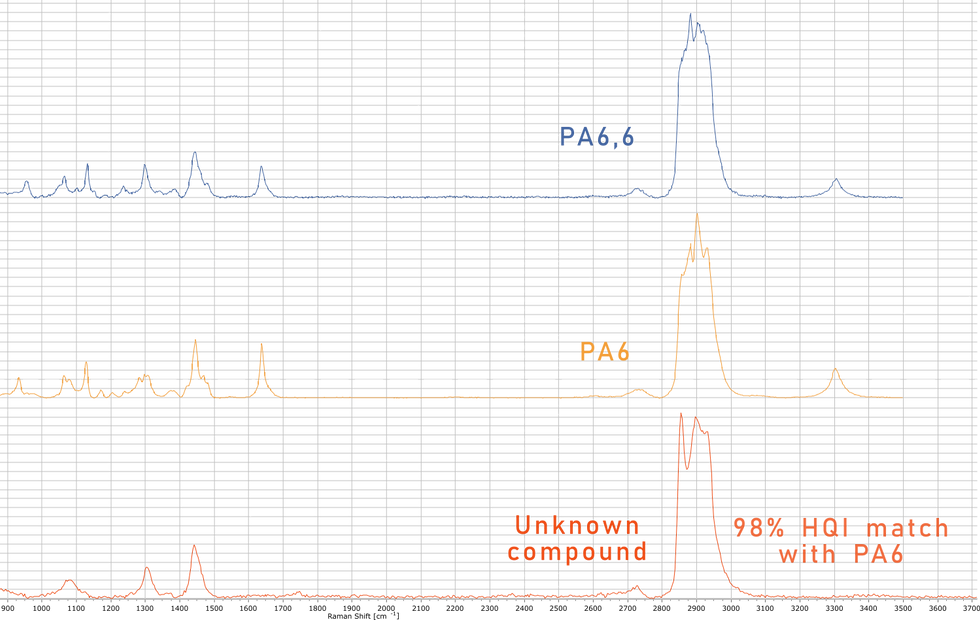How to correctly perform your microplastic recovery experiments
- Oskar Hagelskjær

- Aug 4
- 4 min read
Along with blank experiments, recovery experiments are fundamental to establishing the credibility and accuracy of microplastic analysis, And wiith the introduction of regulatory frameworks like the EU Water Directive (C(2024) 1459) and emerging ISO standards (ISO/FDIS 16094-2), recovery experiments have transitioned from recommended best practice to mandatory compliance requirements. This short guide outlines the essential steps for conducting robust recovery experiments that meet both scientific standards and regulatory expectations.

Why recovery experiments matter
Recovery experiments validate your entire analytical workflow by determining how effectively your method can detect and quantify known microplastic particles. They provide critical information about method performance and demonstrate analytical competence to regulatory bodies and the scientific community.
Regulatory framework
Recent regulatory developments have established specific requirements for recovery experiments:
EU Water Directive requirements:
Recovery assessment using spikes of known microplastics
Must include at least one high-density and one low-density priority polymer
Specific size ranges: 120–200 µm for 100 µm filters, 30–70 µm for 20 µm filters
50–150 particles per spike
Acceptable recovery range: 60–140% (100% ± 40%)
ISO Standards (ISO/FDIS 16094-2):
Verification using at least one known polymer from the ten main types
Recovery checked through spiking particle-free water (for drinking water samples)
3 × 2 repetitions (intermediate precision)
Minimum acceptable recovery: >60%
Cause analysis required if recovery exceeds 100%
Essential components of recovery experiments
1. Reference material selection
Choose reference materials that represent your target analytes while balancing regulatory requirements with practical constraints:
Match Your Target Contaminants: The fundamental principle is using reference materials that represent the microplastics you expect to find in your samples:
For fine fragment contamination: Use fragments in the 10-100 µm range
For fiber contamination: Use fibers in relevant lengths and polymer types
For spherical particle studies: Consider monodisperse beads
Regulatory compliance:
Priority polymers: Include both high-density (e.g., PET, PVC) and low-density (e.g., PE, PP) polymers as required by regulations
Size Ranges: Cover regulatory specifications (120–200 µm for 100 µm filters, 30–70 µm for 20 µm filters). Use EasyMP fragments from 10-100 µm and/or from 100-500 µm.
Particle count: At least 50–150 particles per spike as specified in EU directive, but we recommend at least 500 particles per sample, depending on particle size. For larger particles (from 100 µm and up) 50-150 particles may be sufficient.
Practical Considerations: In reality, we cannot conduct perfectly comprehensive recovery experiments testing all sizes and polymer types simultaneously. Select one representative polymer that best matches your expected sample contamination. For simpler analytical protocols, research suggests recovery rates may be consistent across size ranges, allowing some flexibility in reference material selection. However, more intricate protocols may require size-discriminating recovery validation.
For thorough MP recovery estimation, consider our buoyancy set including buyoant positive and negative PP and PET, respectively.
2. Spike protocol design
Choice of spike microplastic:
Use a microplastic reference material that represents the primary contaminant in your sample..
Concentration levels:
Ensure concentrations are environmentally relevant but also statistically viable.
Consider your method's detection limits
Matrix selection:
Match the matrix to your sample type; or simply use the original matrix if available.
3. Experimental design
Replication requirements:
Minimum 3 × 2 repetitions for intermediate precision (ISO standard)
Process Integration:
Spike samples must follow your complete analytical workflow under identical conditions to routine analyses
Step-by-Step Protocol
Sample preparation
Prepare particle-free water following established protocols
Characterize reference materials using independent methods
Prepare spike solutions with known particle concentrations
Document all preparation steps meticulously
Spiking procedure
Add known quantities of reference materials to matrix prior to or during the first step of the relevant protocol
Analysis
Follow your standard analytical protocol exactly
Use the exact same chemical products, and use products from the same batch if possible
Data collection
Count and identify all particles using your analytical tool of choice.
Record the number of particles and their morphological information (most important is size).
Recovery calculation and acceptance criteria
Recovery rate formula: Recovery (%) = (Particles detected / Particles spiked) × 100
Acceptance criteria:
EU Directive: 60–140% recovery range
ISO Standard: >60% minimum recovery
Above 100%: Requires cause analysis and investigation
Note: Neither the EU directive of the ISO standard requires reporting of recovery within size groups, but we still recommend this practice in addition to reporting size-independent MP recovery.
Method optimization
If recovery falls below acceptable limits:
Flush laboratory equipment with MilliQ water or ethanol between transfer steps to minimize particle losses
When transferring samples between containers or filter membranes, rinse the source container with particle-free water to capture any adhered particles
Documentation and reporting
Essential documentation:
Reference material certificates and characterization data
Statistical analysis of results; total MP recovery and recover within size groups if the data is available.
Compliance with regulatory requirements
Regulatory compliance
Recovery experiments are now mandatory under several regulatory frameworks. Ensure your procedures meet:
Specific polymer and size requirements
Minimum particle counts per spike
Acceptable recovery ranges
Documentation standards
Quality assurance protocols
Moving forward
Recovery experiments represent a critical intersection of scientific rigor and regulatory compliance. As microplastic analysis continues to evolve, maintaining robust recovery protocols ensures data quality, regulatory compliance, and scientific credibility.
The investment in proper recovery experiments pays dividends through improved method performance, regulatory compliance, and enhanced confidence in analytical results. In an era where microplastic data increasingly informs policy decisions and risk assessments, the importance of validated, recoverable analytical methods cannot be overstated.
Oskar Hagelskjær
Founder and CEO
Microplastic Solution



Comments